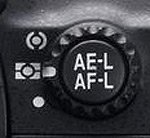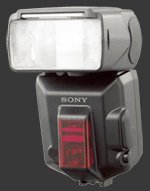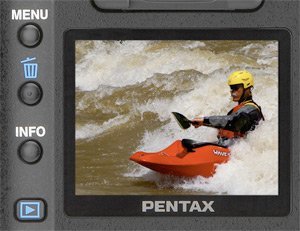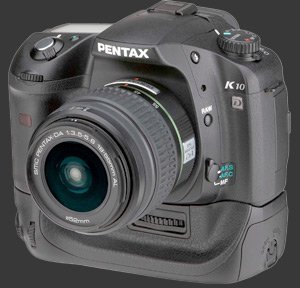10 Megapixels DSLR Cameras Comparison
 All these DSLR cameras have sophisticated metering systems. Each camera specifies its evaluative metering differently. The K10D uses 16-segments, the XTi uses 35-zones, the D80 uses 420-pixels, the A100 uses 40-segments and the D200 uses 1005 pixels. Center-weighed metering is fixed with all but the Nikon cameras. The D80 can weigh 75% of its metering on a 6, 8 or 10 mm circle. The D200 does the same but adds a 13mm option. Most people probably would not know which of these options to choose, so having them in the first place is unimportant.
All these DSLR cameras have sophisticated metering systems. Each camera specifies its evaluative metering differently. The K10D uses 16-segments, the XTi uses 35-zones, the D80 uses 420-pixels, the A100 uses 40-segments and the D200 uses 1005 pixels. Center-weighed metering is fixed with all but the Nikon cameras. The D80 can weigh 75% of its metering on a 6, 8 or 10 mm circle. The D200 does the same but adds a 13mm option. Most people probably would not know which of these options to choose, so having them in the first place is unimportant.
The Nikon D200, being the most action-oriented model, has a top shutter speed of 1/8000s. Every other camera in this roundup stops at 1/4000s. On the slow side, all these cameras have timed modes up to 30s plus a bulb mode for very long exposures. Unfortunately, the bulb time-limit is not documented for most of these cameras. Flash sync for the K10D is 1/180s, for the XTi and D80 is 1/200s, for the A100 is 1/160s or 1/125s when stabilized and for the D200 is 1/250. Apertures are controllable in 1/3 stops for all these cameras. The Pentax K10D also allows 1/2 stops aperture increments and the use of lens aperture rings.
Images can be tuned by controlling various internal processing parameters specified in arbitrary units. These parameters do not normally apply to RAW images which are unprocessed. Some cameras have more increments than others but since the units are unknown, it is impossible to know which camera has more parameter latitude.
| Table 6 -Image Parameters | |
|---|---|
| Sony Alpha A100 | Contrast +/-2, Saturation +/-2, Sharpness +/-2 |
| Pentax K10D | Saturation +/-3, Sharpness +/- 3, Contrast +/- 3 |
| Nikon D80 | Sharpness 6-levels, Color-tone 5-levels, Saturation 3-levels, Hue +/-9, Noise-reduction 4-levels |
| Nikon D200 | Sharpness 6-levels,Color-tone 3-levels, Saturation 3-levels, Hue +/-9 |
| Canon Rebel XTi | Sharpness 0-7, Contrast +/-4, Saturation +/-4, Color-tone +/-4 |
 While every DSLR camera on the market supports RAW files, the Pentax K10D has several standout RAW features. First, there is in-camera RAW development. This means that a RAW shot can be converted to JPEG directly in the camera, no software installation needed. There is also an instant-RAW button which toggles the camera in and out of RAW mode (or RAW+JPEG). Finally, the Pentax K10D supports its purely unprocessed RAW format and Adobe's DNG format which promises to be more portable.
While every DSLR camera on the market supports RAW files, the Pentax K10D has several standout RAW features. First, there is in-camera RAW development. This means that a RAW shot can be converted to JPEG directly in the camera, no software installation needed. There is also an instant-RAW button which toggles the camera in and out of RAW mode (or RAW+JPEG). Finally, the Pentax K10D supports its purely unprocessed RAW format and Adobe's DNG format which promises to be more portable.
 No camera in this roundup is too sophisticated to have a built-in flash and all are equipped with a hot-shoe for using external flashes of their respective manufacturers. The higher-priced Nikon D200 also has a PC sync-port for connecting studio flashes. Other cameras require an adapter to use such flashes.
No camera in this roundup is too sophisticated to have a built-in flash and all are equipped with a hot-shoe for using external flashes of their respective manufacturers. The higher-priced Nikon D200 also has a PC sync-port for connecting studio flashes. Other cameras require an adapter to use such flashes.
| Table 7 - Built-In Flash | |
|---|---|
| Canon Rebel XTi | Guide Number 13 @ ISO 100 17mm Coverage Auto release |
| Nikon D80 | Guide Number 13 @ ISO 100 Auto release |
| Nikon D200 | Guide Number 12 @ ISO 100 Flash Compensation, -3 to + 1 EV Slowest shutter control TTL, Manual, Repeating, Commander Auto release |
| Pentax K10D | Guide Number 11 @ ISO 100 18mm Coverage Manual release |
| Sony Alpha A100 | Guide Number 12 @ ISO 100 |
Each camera features automatic image review, image playback and a camera status display. For playback, magnification, zoom and automatic rotation are standard features. Histograms come in RGB for the Nikon cameras, luminance for the Sony or both for the Canon and Pentax cameras. All these cameras allow to delete an image during automatic image review. Camera status is shown on the main LCD for the XTi and the A100. It is shown on a separate monochrome back lit LCD for the Pentax and Nikon cameras described here. Both Sony Alpha A100 and Canon Rebel XTi use a proximity sensor to turn off the rear LCD when your eye is next to the viewfinder. This is a feature pioneered by Minolta which quickly becomes indispensable. All these 10 megapixels DSLR cameras have 2.5" LCD displays. The Pentax LCD has 210K pixels, all others have 230K pixels.

All these modern DSLR cameras are powered by proprietary lithium-ion batteries. While we would prefer to see standard AA batteries being used directly, the Nikon D80, Nikon D200 and Canon Rebel XTi all have optional battery grips which can be powered by 6 AA batteries. The Sony Alpha A100 does not support a battery grip at all. The Pentax K10D disappointingly has an optional battery grip which does not support AA batteries. The K10D's battery grip is weather-proof and can store an additional SD card plus a camera remote.
The Sony A100, Nikon D200 and Canon XTi use Compact Flash Type 2 memory cards. These are no longer the cheapest type of memory but they are still available in the highest capacitiesUp to 16 GB per card. The Pentax K10D and Nikon D80 use SDHC cards which are currently the cheapest type of memory and are available in sizes of up to 8 GB. SDHC cards are also smaller and faster on average than CF cards.

The last difference is portability. Obviously, none of these are pocket size and they all gain weight when a lens is mounted. The lightest and smallest camera here is the Canon Rebel XTi, some would even say too small but that is highly subjective. The Sony Alpha A100 and Nikon D80 are just a bit heavier but somewhat bigger. Compared to these light models, the Pentax K10D is rather large and heavy. Only the Nikon D200 finds itself larger and heavier than the K10D. Remember that a heavy lens can make any camera heavy but if the lens is much heavier than the camera, it may feel imbalanced.
| Table 8 - Size & Weight | ||
|---|---|---|
| Canon Rebel XTi | 5" x 3.7" x 2.5" | 556g |
| Sony Alpha A100 | 5.2" x 3.7" x 2.8 | 638g |
| Nikon D80 | 5.2" x 4.1" x 3" | 668g |
| Pentax K10D | 5.6" x 4" x 2.8" | 793g |
| Nikon D200 | 5.8" x 4.4" x 2.9" | 920g |

